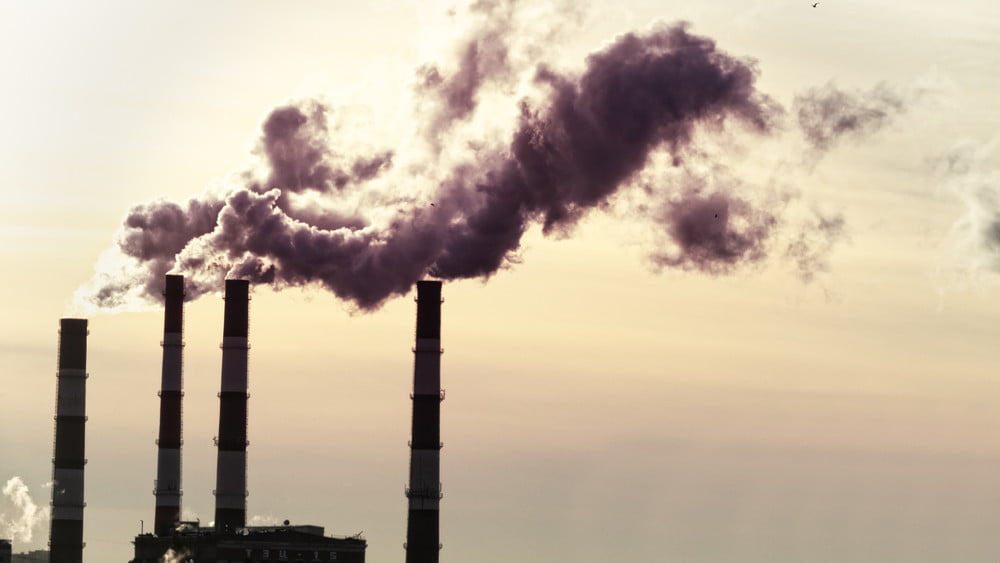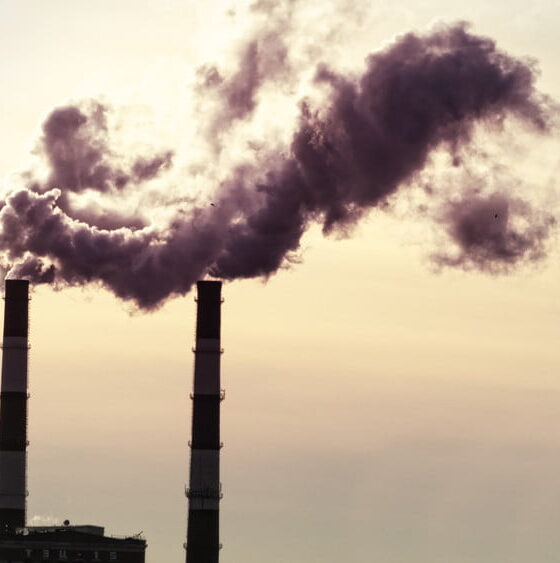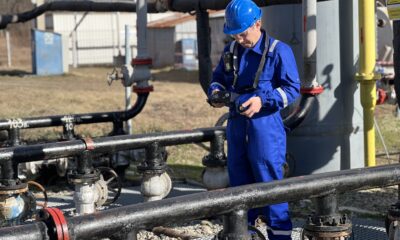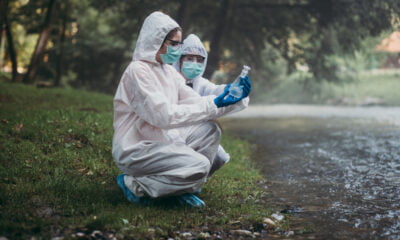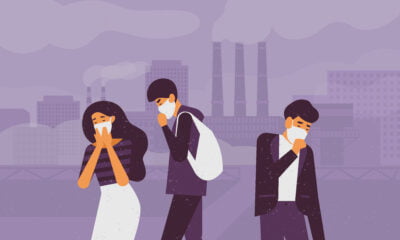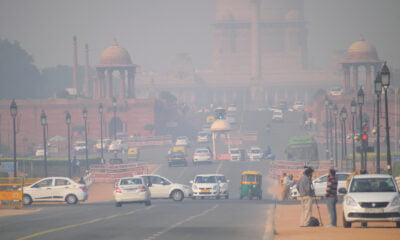Air pollution is still one of the world’s most critical environmental threats, having disastrous impacts on ecosystems and human health. In 2021, it was estimated to have caused 8.1 million fatalities across the world, accounting for more than 1 in 8 total deaths. Toxic industrial emissions, automobile exhaust, and power plants emit harmful chemicals into the air, which enter the atmosphere and contaminate plants, kill animal habitats, and pollute water sources via acid rain and atmospheric deposition.
The EPA reports that there were some 66 million tons of pollution emitted into the air in 2023 in the United States alone, alone a tremendous contributor to environmental damage.
“In addition, from 1990 to 2017 emissions of air toxics declined by 74 percent, largely driven by federal and state implementation of stationary and mobile source regulations, and technological advancements from American innovators.
“In recent years, EPA has acted to dramatically improve America’s air quality by designing and developing national programs that, when fully implemented, will achieve significant reductions in air emissions. The associated air quality benefits will lead to improved health, longevity, and quality of life for all Americans.”
This vast contamination affects water and air quality, harms biodiversity, and spurs climate change. Seriously, 39% of the American population, some 131.2 million people, still reside in areas with failing grades in hazardous levels of ozone or particulate pollution, suggesting the need for increased environmental protection and control measures. Air pollution is rising to alarming levels.
Most people understand on some intuitive level that air pollution is not good. It’s bad for your health. It erodes the ozone layer. Most probably, it reflects a set of circumstances that is causing additional environmental harm.
For example, a factory that is polluting the air is probably also producing runoff that negatively impacts local water supplies and forested areas.
Air pollution=bad.
But how bad? Just saying that something unhealthy has never been enough to mobilize the masses. Cheeseburgers are unhealthy, but we love them. A sedentary lifestyle is unhealthy, but most of us spend all day in chairs.
What is air pollution doing to our bodies, and how can healthcare organizations use that information to inspire change?
Air Pollution Overview
The specific impacts of air pollution depend on both the type of pollution and the people affected. Often, the most vulnerable populations—babies, senior citizens, and individuals with respiratory conditions—are hit the hardest. For example, those with asthma face significantly higher risks on days with poor air quality.
It’s easy to dismiss this issue if you don’t feel personally affected. You might think, “That’s not my problem. And anyway, how does one person fix the air?” Those are fair questions, but there’s more to consider.
First, even if you’re not directly impacted, someone close to you likely is. Think of it as the five degrees of Kevin Bacon effect—you’re probably no more than a step or two removed from an elderly person, a child, or someone with asthma.
Second, poor air quality isn’t just a problem for vulnerable groups. Over time, it affects everyone. Long-term exposure can lead to new health issues, even in otherwise healthy people, increasing the risk of cancer and cardiovascular disease.
Full stop: If you live in a community with air pollution (and you almost certainly do), it’s already affecting your health—whether you realize it or not.
Long-Term Environmental Impacts
Activities that degrade air quality often harm other aspects of the environment as well. As mentioned earlier, water contamination is a major concern. Millions of lakes, rivers, and streams in the United States are polluted by factory waste and toxic rainwater runoff. This isn’t just an abstract issue—it affects the water we drink. Over 60% of the U.S. population relies on surface water sources like lakes and rivers, while the rest depend on groundwater, which is also vulnerable to pollution from poor environmental management.
Then there’s the ozone layer and the growing issue of global warming. Many people focus on the increasing heat, which is certainly a problem, but the bigger consequences are more complex. For example, rising temperatures contribute to more frequent and intense wildfires, which significantly degrade air quality—even for people living hundreds or thousands of miles away.
Another consequence is the surge in mosquito-borne illnesses. Warmer temperatures lead to longer mosquito breeding seasons, increasing the spread of diseases like malaria and West Nile virus in parts of the U.S. that previously had minimal risk.
Too often, the environment is treated as an abstract concept—just numbers on a page. But it’s not separate from daily life. Poor environmental management affects everything: the food we eat, the water we drink, and the air we breathe.
How Healthcare Organizations Can Help
Policymakers have the most influence over environmental change. They create regulations and set standards for major corporations—the biggest environmental offenders by an enormous margin. Ultimately, the responsibility falls on us as voters to communicate our demand for improved environmental health to lawmakers.
Healthcare organizations play a crucial role in this process. As trusted authorities, they have firsthand knowledge of how poor air quality and other environmental issues affect real people.
More importantly, they can frame these problems in a way that resonates with what people care about most: their health and the health of their loved ones. By using their influence to advocate for stronger environmental policies, healthcare organizations can help bridge the gap between scientific data and public concern, making the case for action more urgent and personal.
What This Looks Like in Practice
Keep in mind that doctors and nurses are really very busy. They aren’t going to spend their days on picket lines outside of factories. They might support educational initiatives. They might warn their patients about the risks of air pollution.
They might also encourage hospital administrators to take a more proactive approach.
Often, healthcare executives at one point logged time in the trenches, as patient care providers.
For example, a DNP is a nurse who went to graduate school to focus less on direct patient care and more on research. They know what it takes to serve their community.
They simply do it on a larger scale. DNPs often occupy leadership roles within hospitals. They may be very receptive to public health initiatives that focus on reducing air pollution.
Conclusion
It’s not one person’s responsibility. It’s not the burden of a single organization. Certainly, it is not a problem that healthcare organizations can be expected to solve. Doctors and nurses can advocate for solutions. They can expose risks. They can educate.
At the end of the day, though, fixing public policy is not their responsibility. Their job is to treat patients. It’s up to us—all of us—to take the problem of air pollution seriously.
Sound the alarm with your local representatives. Organize educational campaigns. Analyze your behavior. Are you contributing to the problem of air pollution? The answer, of course, is yes.
Unless you are living a Walden-like existence in the woods somewhere—the fact that you are reading this digital article suggests that you are not—you are probably producing dangerous emissions.
Your house. Your car. The phone, tablet, or computer that you are reading this on. They all directly or indirectly result in dangerous emissions. Yes. The biggest changes will need to happen at a legislative level. You can still be impactful. Reduce your emissions. Become outspoken about the issues. Support businesses with carbon-neutral initiatives.


 Environment10 months ago
Environment10 months agoAre Polymer Banknotes: an Eco-Friendly Trend or a Groundswell?

 Environment11 months ago
Environment11 months agoEco-Friendly Home Improvements: Top 7 Upgrades for 2025

 Features9 months ago
Features9 months agoEco-Friendly Cryptocurrencies: Sustainable Investment Choices

 Features10 months ago
Features10 months agoEco-Friendly Crypto Traders Must Find the Right Exchange
